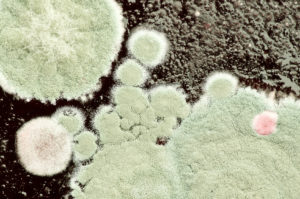 Got a chronic cough that will not go away or respond to any medications? Do you have unexplained fatigue? Or, recurring yeast infections? It could be fungus in your body! More and more holistic practitioners and Western medicine doctors are making the connection between chronic disease and fungal infections in our bodies.
Got a chronic cough that will not go away or respond to any medications? Do you have unexplained fatigue? Or, recurring yeast infections? It could be fungus in your body! More and more holistic practitioners and Western medicine doctors are making the connection between chronic disease and fungal infections in our bodies.
So how does fungus enter our bodies? There are two ways: 1. We ingest it in our food or 2. We inhale it from our environment. Let’s talk about fungus in our food first.
Most everyone has heard about candida, but there are many other fungi. When fungi invade our system they wreak havoc on the immune system and leave it overwhelmed and worn out and further weakens it by excreting toxins, which are secondary metabolites, called mycotoxins. There are a number of foods notorious for containing mycotoxins. If you suspect you might suffer from a fungus infection check out this list of foods to avoid:
- GRAINS, including, but not limited to, wheat, corn, barley, sorghum and rye. Let me highlight the two main ones here, because I know you all love your corn chips, bread and pasta. Corn is UNIVERSALLY contaminated with fumonisin and aflatoxin (known for their cancer causing effects), and zearalenone and ochratoxin, which cause estrogenic and kidney-related problems (Council for Agricultural Science and Technology, Mycotoxins: Risks in plant, animal and human systems. Jan 2003). Now a short word about wheat. Wheat, it doesn’t matter if it’s organic, inorganic or sprouted, has been stored in a silo for many months before being used. It is very likely contaminated with fungi and mycotoxins.
- SUGAR, this includes sugar made from sugar cane and sugar beets, are often contaminated with fungi, but, in addition, they actually FUEL the growth of fungi, because fungi need carbohydrates, -sugar- to thrive.
- ALCOHOLIC BEVERAGES, like beer and wine. Alcohol is the mycotoxin of brewer’s yeast. Other mycotoxins can be introduced into these beverages through use of mold-contaminated grains and fruit. Before you drink for the health of your heart, consider the other possible risks. There are safer ways of consuming antioxidants.
- PEANUTS, a 1993 study demonstrated 24 different types of fungi that colonized the inside of the peanuts used in the report (Costantini, A. Etiology and Prevention of Atherosclerosis. Fungalbionics Series.1998/99). And this was after the exterior of the peanut was sterilized! So, when you choose to eat peanuts, not only are you potentially eating these molds, but also their mycotoxins.
- HARD CHEESES, if you think you might have a fungus problem, refrain from eating these.
- Last, but not least, TABLE MUSHROOMS and any food made out of mushrooms are obviously a no-no under these circumstances!
In Part II we will explore how we are effected by fungi we inhale from our environment! Don’t miss it!